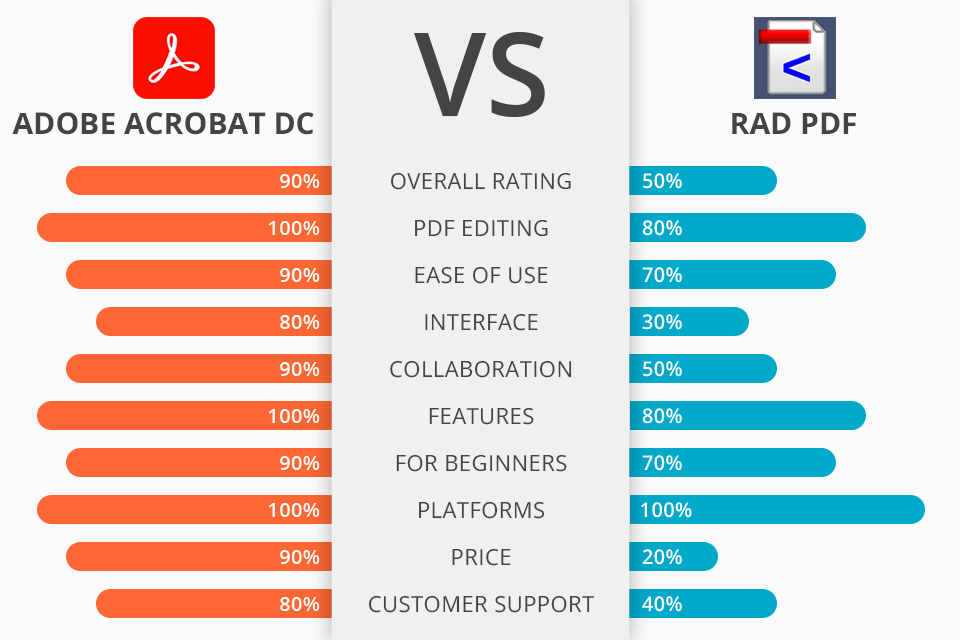
Adobe Acrobat DC vs RAD PDF comparison will be of interest to those who often encounter PDF files in work and everyday life. Both opponents are great finds for editing documents, but there are some differences. Adobe’s product will satisfy the needs of those who work professionally with PDF, and RAD PDF is an ideal option for those who need fundamental document processing tools.
As a pro-level program, Adobe Acrobat DC offers features for creating, editing, and sharing PDF docs. In addition, you can add electronic signatures, convert and scan files, and perform many other operations required by work and everyday tasks.
RAD PDF is a ready-made product suitable for both personal and corporate use. It has everything you need for basic editing of PDF docs. In addition to the reader, you can use a PDF editor & PDF annotator as a browser version for web products.
As a full-featured software, Adobe Acrobat DC offers advanced features for organizing and managing your PDF documents. It has gained popularity around the world, becoming an indispensable assistant for more than 5 million corporations. Merging and splitting docs, advanced editing, cutting and pasting the text – all this and many other basic and advanced features are available to you with Adobe Acrobat DC. Besides the above, it is also used as Word, PowerPoint, and Excel to PDF converter, so working with Microsoft Office products is an elementary task.
Adobe Acrobat DC is the winner >
Adobe Acrobat DC offers:
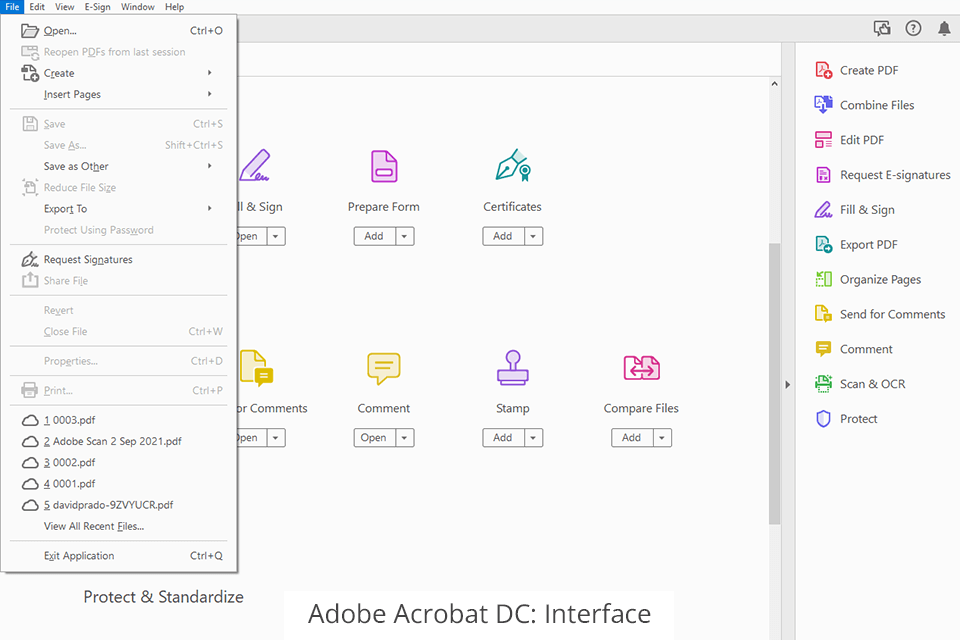
Perhaps the most important advantage of Acrobat DC is its sophisticated, fully thought-out, user-friendly interface. That is why users around the world prefer products from Adobe since its team pays special attention to the user experience.
However, this comes with a small downside – Acrobat DC is more demanding on your PC’s performance. Therefore, if you have weak hardware, then it makes sense to think about what suits you best – Adobe Acrobat DC or RAD PDF, or another lightweight PDF editor.
Being the best fillable PDF creators available on today’s software market, Acrobat DC offers a full feature set for advanced PDF work. However, to use it to the fullest Creative Cloud subscription is required. After subscribing, you will have almost limitless possibilities in reading, annotating, scanning, signing, and converting PDF files to the needed formats.
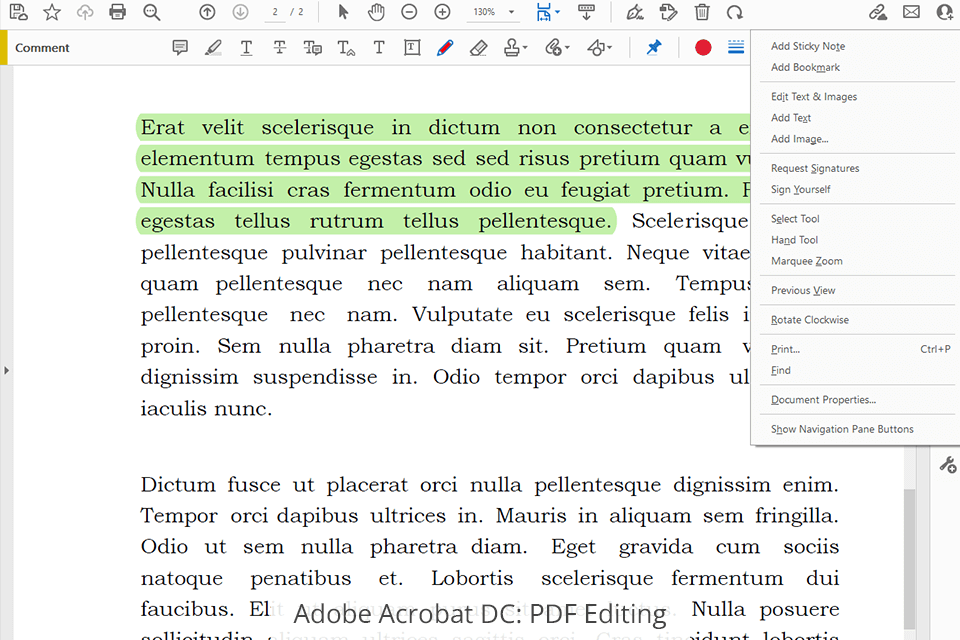
The basic functions of working with a document include merging and splitting docs, editing and customizing, cutting and pasting text, and so on. PDF conversion is available for a variety of formats, be it Microsoft Office formats or images. PDF compression is another cool feature of this product that can do this without data loss, however, the result will still be very dependent on the original data of your file.
Comparing Adobe Acrobat DC vs RAD PDF, the advanced capabilities of the former in terms of text and image customization immediately catch the eye. Adding any image to your file is a no-brainer task. All subsequent manipulations associated with it, such as rotation, cropping, etc., also occur without much effort and directly in Acrobat DC. Text customization offers you highlighting, choice of font, color, and size, as well as space between letters and lines, and more.
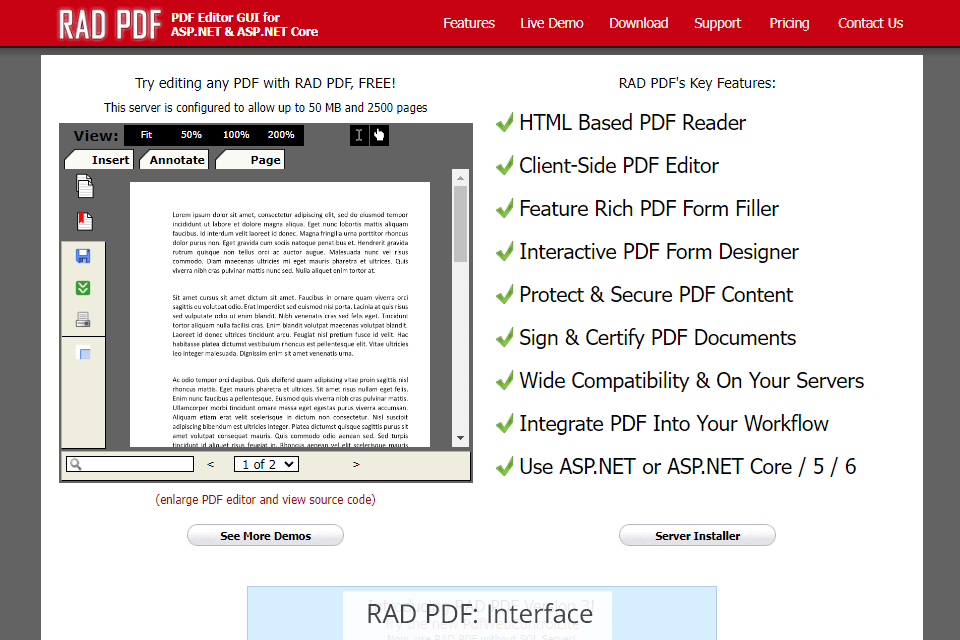
RAD PDF can rightfully be called a flexible and strong alternative to the usual PDF programs. That’s because it’s a full-featured HTML-based PDF reader, editor, and form filler for ASP.NET. Its greatest advantage is that it can be used in almost any browser without installing any plug-ins or programs, which cannot be said about its opponent in the Adobe Acrobat DC vs RAD PDF battle.
Integrated directly with ASP.NET, RAD PDF provides access control to doc contents, enabling dynamic PDF form completion and easier PDF modification. This product features powerful document analysis and editing features, whether on the client or server side.
Implementing customizable workflows and developing a seamless customer experience are the top reasons why users prefer RAD PDF. The capabilities of this tool cover all the needs of most clients: saving and reopening partially filled PDF forms, pre-filling PDF form data, controlling how the PDF content is used (for example, print once), locking PDF form field values or object locations, adding timestamps or user signatures from server repositories, setting up and localizing text in the UI, and intercepting internal events (such as save, print, and search).
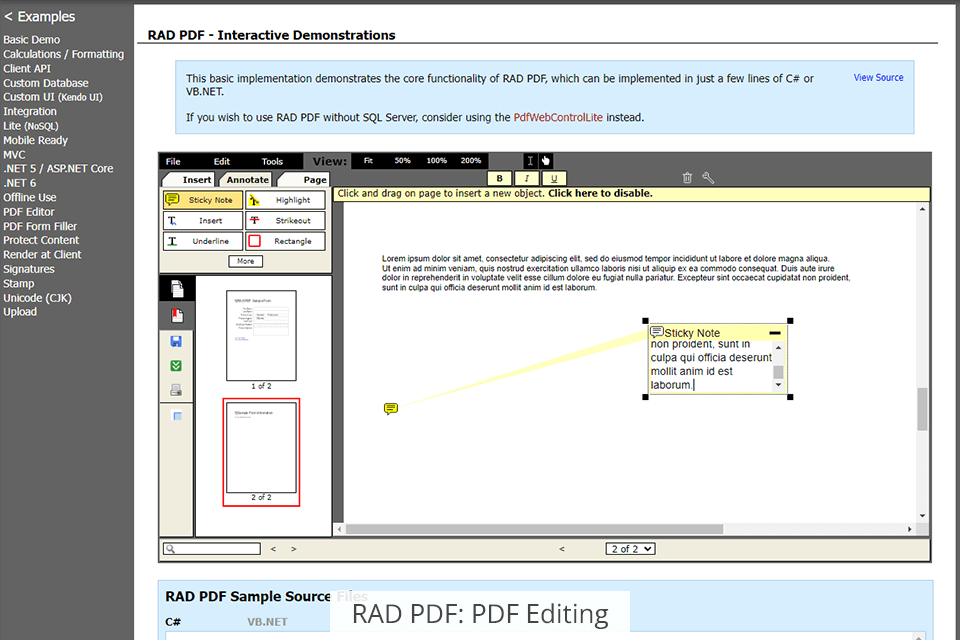
The big advantage of RAD PDF is the ability to work with your file without installing any programs or plugins and without getting access to the document itself on the client side, which cannot be said about its competitor in Adobe Acrobat DC vs RAD PDF battle and most other PDF encryption software. Thus, your file will always be protected on your server.
Working with a document in this mode, you can restrict the direct access to it, but you can make viewing and printing available. In addition to this, you can allow or prevent users from typing the document, searching for it, extracting text from it, and even using some editing tools.


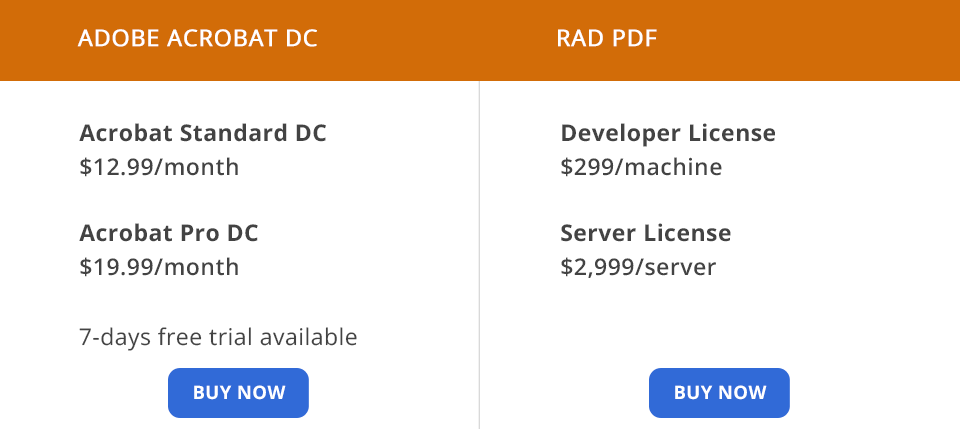
Adobe Acrobat DC comes with two plans and a free 7-day trial that starts from the moment you create an account. The first plan, Acrobat Standard DC, costs $12.99/mo. It includes functions for exporting, converting, editing, creating, filling, signing, and sharing PDF documents and forms, as well as an advanced set of functions for smartphones.
The second plan, Acrobat Pro DC, costs $19.99/mo. In it, you will find all the same functions as in the first plan, plus the functions of comparing two PDF versions to keep track of all modifications, corrections, etc.
The developer provided RAD PDF demo versions so that the user can get acquainted with the software and its capabilities. Regarding prices, there are 2 types of licenses:
Developer License will cost you $299/machine
Server License will cost you $2,999/server
Both types are perpetual, for which you are charged a one-time fee. Both also come with a monthly maintenance plan.
They also offer separate Maintenance Plans. They are as follows:
Developer License will cost you $74.75/machine
Server License will cost you $749.75/server
With each of these plans, you can benefit from continued access to customer support and all software updates as long as your plan validity allows. If the validity period has expired and you wish to renew it, an additional fee of up to 100% may be charged.